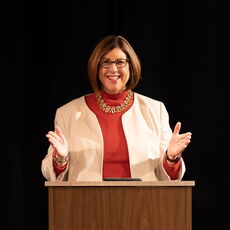
How to master the art of expert source letters: a guide for professionals
After doing PR for nearly four decades, I can remember the time when I would type a letter introducing myself or my employer and mail it to a newspaper editor or broadcast journalist in hopes of being contacted when they were doing a story on my industry, which happened to be skiing.

Since networking is my superpower, and I know people across all industries in Maine, I am frequently contacted by journalists who are looking for someone who can comment on a topic or provide background on something like the flooding that unfortunately occurred recently at Maine’s ski resorts.
Now more than ever, journalists are seeking expert opinions and insights to enhance their stories, making it crucial for PR professionals, or any professional who wants to be quoted by the media, to effectively connect with the news media.
One powerful tool in achieving this is known as the expert source letter. Crafting compelling expert source letters will increase the chances of being considered for interviews and featured in news stories.
Identify the right opportunities: To make themselves known to the news media, experts must first identify the right opportunities. Stay updated on current events, industry trends, and upcoming stories relevant to your client's expertise. Monitor journalist requests on social media platforms, utilize media databases, and build relationships with journalists to understand their preferences and areas of interest.
Tailor the letter to the journalist: When writing an expert source letter, it is crucial to personalize it for each journalist. Begin by addressing the journalist by name and referencing their recent work or articles that align with your client's expertise. To do this, you must stay on top of journalists’ areas of interest, their outlets, and the best way to connect with them. Some like an old-fashioned telephone call, some like email and some like to be contacted on one of the social media platforms. Keeping track of this is complex and having a database or contact software like Hubspot can facilitate tracking names, contact info and the best way to connect. Taking the time to understand their interests and establish a connection when you aren’t looking for anything is the best way to start.
Showcase expertise and relevance: Highlight your client's (or your) expertise, and why they are uniquely qualified to provide insights on the topic at hand. Clearly articulate their credentials, achievements, and any relevant experience that positions them as a credible source. Provide specific examples or case studies that demonstrate their expertise and its impact.
Offer a unique angle: Journalists are always looking for fresh perspectives and unique angles to make their stories stand out. Encourage your client to offer a fresh take on the topic, providing insights that haven't been widely covered. This will increase the chances of capturing the journalist's attention and setting your client apart from other potential sources.
Provide supporting materials: Include any supporting materials that can help journalists understand the value your client brings to the story. This may include links to published articles, research papers, or whitepapers authored by your client. Additionally, offer to provide high-resolution images, infographics or data that can enhance the visual appeal of the article.
Be concise and clear: Journalists receive numerous pitches daily, so it's essential to keep your expert source letter concise and to the point. Clearly state the purpose of the letter, provide a brief overview of your client's expertise, and explain why they would be a valuable source for the journalist's story. Avoid excessive jargon and technical language, ensuring your message is easily understood.
Be strategic with the follow-up: After sending the expert source letter, follow up with the journalist in a timely manner. If they are open to a meeting for coffee or lunch, set up a time and do it. Face to face meetings are the best way to establish a long-lasting relationship of trust. However, be mindful not to be overly persistent or pushy. If they aren’t open to a meeting, then craft a polite and concise follow-up email, reiterating your client's expertise and offering any additional information or clarification they may require.
Remember, building strong relationships with journalists and consistently delivering valuable insights will help establish you as go-to experts in their respective fields.














0 Comments